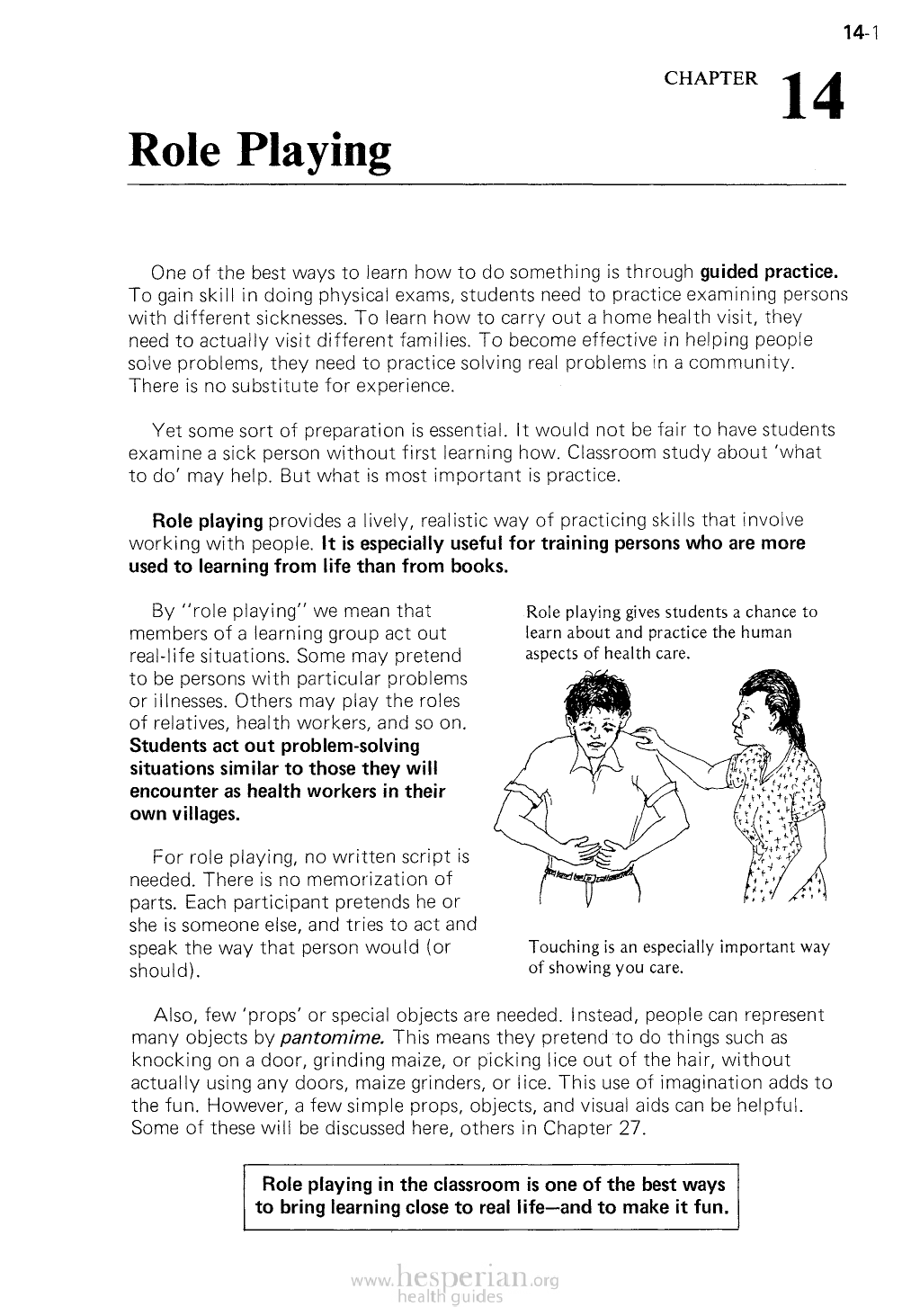
Role Playing
14CHAPTER
14-1
One of the best ways to learn how to do something is through guided practice.
To gain skill in doing physical exams, students need to practice examining persons
with different sicknesses. To learn how to carry out a home health visit, they need to
actually visit different families. To become effective in helping people solve problems,
they need to practice solving real problems in a community. There is no substitute for
experience.
Yet some sort of preparation is essential. It would not be fair to have students
examine a sick person without first learning how. Classroom study about ‘what to do’
may help. But what is most important is practice.
Role playing provides a lively, realistic way of practicing skills that involve working
with people. It is especially useful for training persons who are more used to
learning from life than from books.
By “role playing” we mean that
members of a learning group act out
real-life situations. Some may pretend
to be persons with particular problems
or illnesses. Others may play the roles
of relatives, health workers, and so on.
Students act out problem-solving
situations similar to those they will
encounter as health workers in their
own villages.
Role playing gives students a chance to learn
about and practice the human aspects of
health care.
For role playing, no written script is
needed. There is no memorization of
parts. Each participant pretends he or
she is someone else, and tries to act
and speak the way that person would (or
should).
Touching is an especially important way of
showing you care.
Also, few ‘props’ or special objects are needed. Instead, people can represent
many objects by pantomime. This means they pretend to do things such as knocking
on a door, grinding maize, or picking lice out of the hair, without actually using any
doors, maize grinders, or lice. This use of imagination adds to the fun. However, a few
simple props, objects, and visual aids can be helpful. Some of these will be discussed
here, others in Chapter 27.
Role playing in the classroom is one of the best ways
to bring learning close to real life—and to make it fun.